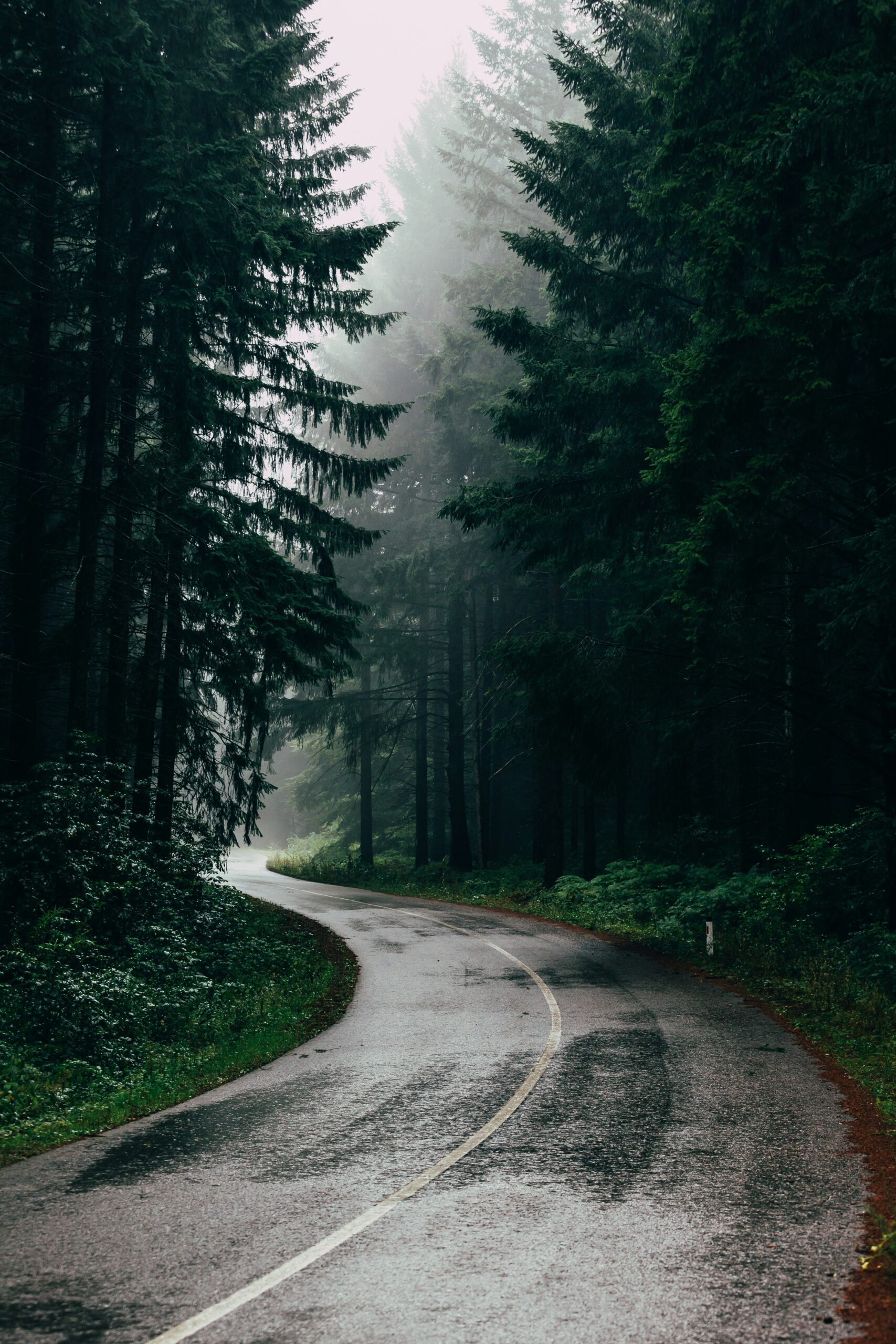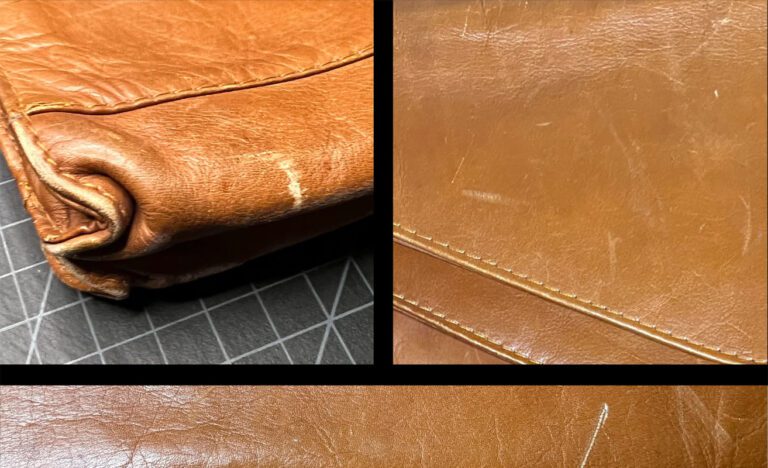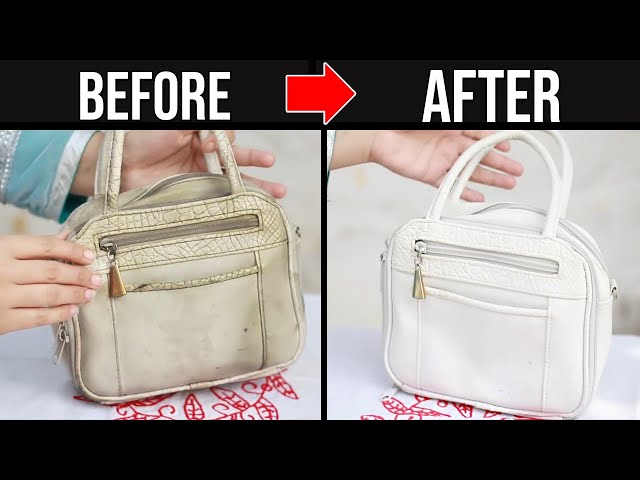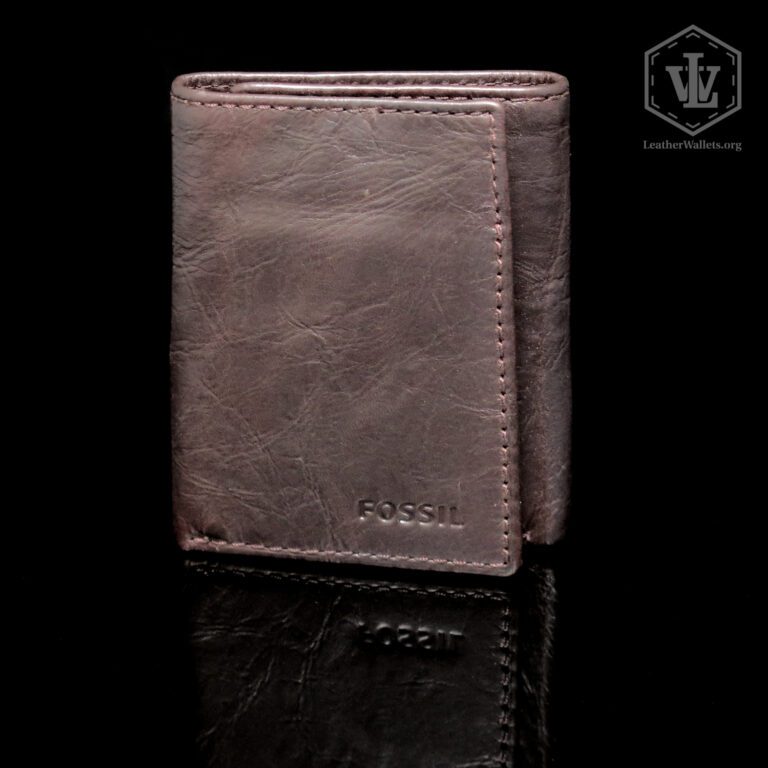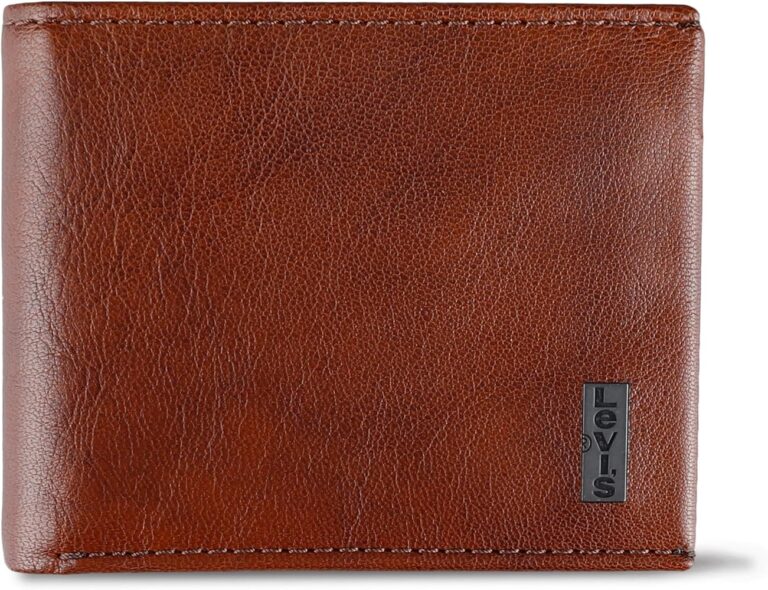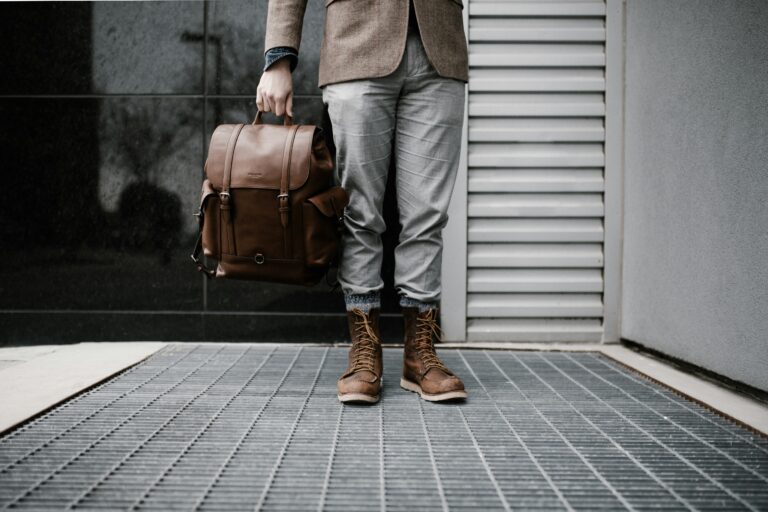Can I Wear Leather Jacket in Rain? Protection Guide
Wearing Leather Jackets in Rain
When considering the question, “can I wear leather jacket in rain”, it’s important to understand the inherent properties of leather and how different types can react to water.
Understanding Leather Resistance
Leather, by nature, is a porous material, which means it has the ability to absorb moisture. When exposed to water, leather can become discolored, stiff, or even crack over time. Natural leather is not naturally waterproof and can easily be damaged by rain. However, certain treatments can enhance its water resistance.
Treated leathers like waxed or oiled leather offer more protection and can withstand exposure to rain better than untreated leather. To protect your leather motorcycle jacket from rain, consider using a water-repellent spray and conditioner. Leather lotion, which is water-resistant, can create a barrier between the rain and your leather jacket. Apply this at home before wearing the jacket outside.
| Leather Type | Natural Water Resistance | Recommended Treatment |
|---|---|---|
| Natural Leather | Low | Water-repellent spray, conditioner |
| Treated Leather (Waxed/Oiled) | High | Re-application of treatment as needed |
Types of Leather and Water Damage
Different types of leather vary in their susceptibility to water damage. Understanding these differences can help you decide how to protect your jacket.
-
Full-Grain Leather: This is the most durable type of leather but also the least water-resistant. It retains the natural grain, which leads to more pores and a higher chance of water absorption.
-
Top-Grain Leather: This type has the outermost layer sanded off, making it smoother and more water-resistant than full-grain leather. It is less porous, so rain has a reduced impact.
-
Synthetic Leather: Made from plastic-based materials, synthetic leather is inherently more water-resistant than natural leather. It’s a practical alternative for rainy weather but lacks the distinct feel and patina of real leather.
| Leather Type | Durability | Water Resistance | Common Use |
|---|---|---|---|
| Full-Grain Leather | Very High | Low | High-end leather goods |
| Top-Grain Leather | High | Medium | Fashion jackets |
| Synthetic Leather | Medium | High | Affordable alternatives |
Rain can indeed damage leather, and the extent of the damage depends on various factors including the type of leather, duration of exposure, and how well the leather has been conditioned or treated (Lusso Leather).
For more tips on maintaining and protecting your leather jacket, visit our guides on how to care for leather jacket and how to store leather jacket. Understanding these aspects will help you make an informed decision on wearing your leather jacket in the rain.
Protecting Your Leather Jacket
Leather jackets are stylish and versatile, but they need proper care to withstand the elements, especially when it comes to rain. Here, we will cover effective waterproofing techniques and maintenance tips to keep your jacket in top condition.
Waterproofing Techniques
To ensure your leather jacket can handle rainy conditions, it’s crucial to apply waterproofing treatments. Several methods can make your jacket more resistant to water:
-
Water-Repellent Sprays: Silicone polymer and acrylic copolymer sprays are popular choices. These sprays form a protective barrier over the leather, repelling water effectively. Make sure to apply the spray evenly and let it dry thoroughly before wearing your jacket.
-
Wax-Based Dressings: Wax treatments create a water-resistant layer on the leather surface. This method is beneficial for boosting the jacket’s natural resistance to moisture. Apply a thin layer of wax, let it absorb, and then buff the jacket to a shine.
-
Grease or Oil Dressings: These are heavier treatments that provide excellent water resistance. They work by penetrating the leather, making it more supple and resistant to rain. However, these treatments can darken the leather and may need reapplication over time (Quora).
| Waterproofing Method | Pros | Cons |
|---|---|---|
| Water-Repellent Sprays | Easy to apply, clear coat | Needs reapplication |
| Wax-Based Dressings | Long-lasting, enhances texture | Can alter look, needs buffing |
| Grease/Oil Dressings | Deep protection, softens leather | Darkens leather, messy application |
Maintaining Leather Condition
Regular maintenance is key to extending the lifespan of your leather jacket. Here are some essential practices:
-
Condition Regularly: Conditioning your leather jacket keeps it supple and prevents cracking. Use a leather conditioner every few months to maintain its texture and appearance. This is especially important after exposure to rain due to drying effects.
-
Proper Drying: If your leather jacket gets wet, dry it at room temperature on a flat surface. Avoid direct heat sources or sunlight, as they can cause the leather to become stiff and brittle. Gently blot excess water with a soft cloth and let the jacket dry naturally.
-
Storage: Store your leather jacket in a cool, dry place. Using a breathable garment bag can protect it from moisture buildup. Proper storage is essential to prevent mold and mildew, which can severely damage the leather. For more tips on storage, visit our article on how to store leather jacket.
For additional advice on maintaining your jacket, check out our guide on how to care for leather jacket.
By implementing these techniques and maintenance practices, you can protect your leather jacket from rain and ensure it remains in great condition for years to come.
Leather Jackets vs. Rain
Understanding how leather interacts with rain is vital for every leather jacket owner. The natural qualities of leather make it sensitive to water, and knowing how rain can affect your jacket is key to maintaining its durability and appearance.
Impact of Rain on Leather
Leather is a porous material, affecting its interaction with water. When exposed to rain, leather can experience several detrimental effects:
- Water Damage: When leather gets wet, water forms temporary bonds with the oils that lubricate the leather’s fibers. As these oils are floated away, the leather becomes drier and stiffer. The protein bonds holding the fibers together become brittle and can break more easily.
- Discoloration: Water can ruin the appearance of leather by moving dyes and causing spots, splotches, and streaks. Once water marks occur, they are almost impossible to erase (Quora).
- Cracking: Prolonged exposure to moisture can deplete natural oils, making the leather brittle and prone to cracking (Studio Suits).
- Mold Formation: Significant moisture exposure can lead to mold and mildew formation.
In summary, while leather has some degree of natural water resistance, excessive water exposure can lead to severe damage. For more on whether leather jackets can get wet, check our detailed article on can leather jackets get wet.
Careful Rainy Day Practices
To mitigate the effects of rain on your leather jacket, follow these careful practices:
- Use an Umbrella: Shield your jacket from direct rain exposure by using an umbrella.
- Apply Waterproofing Products: Treat your jacket with waterproofing sprays formulated for leather to enhance its water resistance. This can help repel small amounts of water.
- Avoid Prolonged Exposure: Limit the time your jacket is exposed to rain. Even with waterproofing treatments, leather is still vulnerable to prolonged moisture.
- Dry Properly: If your jacket gets wet, dry it naturally at room temperature away from direct heat sources. Use a clean, dry cloth to blot excess water.
- Maintain Regularly: Regularly condition your jacket to replenish essential oils and keep the leather supple. For detailed tips, see how to care for leather jacket.
By following these practices, you can extend the life of your leather jacket and keep it looking its best, even on rainy days. For additional tips, read careful practices during rainy days.
| Best Practices | Benefits |
|---|---|
| Use an Umbrella | Reduces direct rain exposure |
| Apply Waterproofing Products | Enhances water resistance |
| Avoid Prolonged Exposure | Minimizes damage risk |
| Dry Properly | Prevents stiffness and mold |
| Maintain Regularly | Keeps leather supple and nourished |
Alternative Materials for Rain
While leather jackets offer timeless style and durability, they may not always be the best option for rainy weather. Alternative materials can provide effective rain protection while maintaining comfort and functionality.
Polyester and Nylon Options
Polyester and nylon are popular choices for rainwear due to their water-resistant properties. Both materials are lightweight, durable, and quick-drying, making them ideal for rainy conditions. However, it’s essential to consider their breathability which may not be as high as natural materials (Lusso Leather).
| Material | Water Resistance | Durability | Quick-Drying | Breathability |
|---|---|---|---|---|
| Polyester | High | High | High | Moderate |
| Nylon | High | High | Very High | Moderate |
For those seeking alternatives to leather jackets for rainy days, polyester and nylon provide practical solutions. They can be easily found in various styles and designs, offering both functionality and aesthetic appeal.
Faux Leather Considerations
Faux leather, known for its resemblance to real leather, is another viable alternative for rainy weather. Made from synthetic materials like PVC and PU, faux leather is generally more resistant to water penetration than genuine leather. However, it’s still important to take measures to keep the jacket as dry as possible to maintain its appearance and longevity.
Faux leather is typically made from:
- PVC (Polyvinyl Chloride): Known for its durability and water resistance.
- PU (Polyurethane): Offers a softer texture and more flexibility compared to PVC.
Eco-friendly alternatives to faux leather include materials like cactus leather or pineapple leather, which provide similar benefits while being sustainable.
For more insights on taking care of your faux leather and real leather jackets, check out:
By considering these alternative materials, you can choose the best option for staying dry and stylish in rainy weather.
Best Practices for Rainy Days
Wearing your leather jacket in the rain requires extra care to prevent damage and maintain its quality. Below are some best practices to follow during rainy days.
Drying and Conditioning Tips
Once your leather jacket gets wet, it’s important to dry it promptly and condition it regularly to maintain its quality.
-
Air Drying: After exposure to rain, gently pat your jacket with a soft cloth to remove excess moisture. Hang it in a well-ventilated area away from direct heat sources, such as radiators or hair dryers, which can dry out the leather and cause cracks.
-
Use a Leather Conditioner: Once the jacket is dry, apply a leather conditioner to keep it soft and prevent cracking. Conditioning the leather helps restore lost oils, ensuring the material remains supple and resilient. For more tips on maintaining your jacket, check out how to care for a leather jacket.
| Product Type | Application Frequency |
|---|---|
| Leather Conditioner | Every 3-6 months |
| Waterproofing Spray | Before exposure to rain |
Practical Rainy Day Solutions
Taking preventive measures and making smart choices can help protect your leather jacket from rain damage.
-
Waterproofing Spray: Before heading out on a rainy day, apply a waterproofing spray designed for leather. This creates a protective barrier that helps resist water penetration.
-
Use an Umbrella or Raincoat: Whenever possible, use an umbrella or wear a raincoat over your leather jacket to shield it from direct rain exposure.
-
Avoid Prolonged Exposure: Limit the time your jacket is exposed to rain. Leather can withstand small amounts of moisture, but prolonged exposure can lead to damage, including mold and mildew formation.
-
Routine Inspections: Regularly inspect your jacket for signs of water damage, such as discoloration, stiffness, or mold. Early detection allows you to address issues before they worsen. For additional insights, refer to our guide on how to clean mold off a leather jacket.
Implementing these best practices ensures that your leather jacket remains stylish and well-protected, even on rainy days. For more information on caring for your leather jacket, visit our articles on how to store a leather jacket and how to clean a suede leather jacket.

